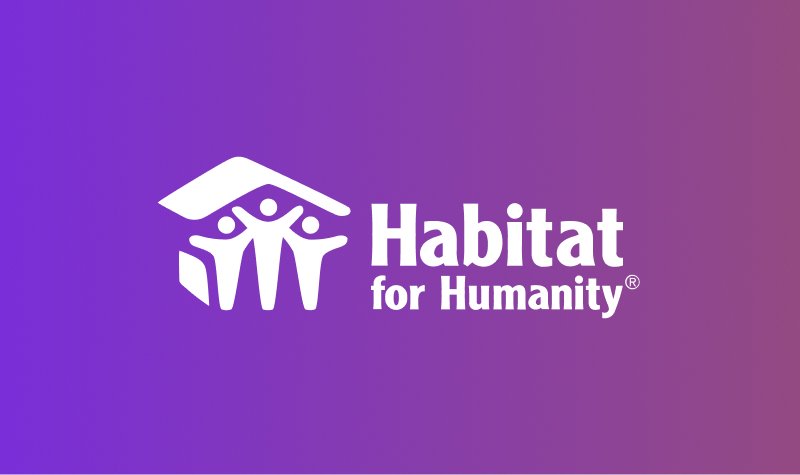Founded in 1991, Habitat for Humanity Edmonton (Habitat Edmonton) serves the Greater Edmonton Area and many communities across northern Alberta to bring communities together to help families build strength, stability, and independence through affordable home ownership. In 2021, Habitat Edmonton celebrated 30 years of serving families and now has over 900 volunteers annually, 100 employees, and 793 families served… and counting!
Challenge
Each local Habitat for Humanity organization is a self-contained entity: Habitat Edmonton raises its own funds, manages its operations, and receives support from their national federation as needed. To be successful Habitat Edmonton’s many stakeholders, including employees, donors, volunteers, governments and partner families, have to find ways to work together effectively and to do that, the organization needs full oversight into operations.
In order to drive growth and ability to deliver on their core purpose, Habitat Edmonton needed to elevate the use of dashboards at all levels of the organization and drive more data-supported decision-making. By implementing a high-level KPI dashboard that consolidated information from the multiple systems within Habitat Edmonton, the Executive Team, as well as the Board, will gain further insight on progress made towards strategic goals in real time. At the department level tactical dashboards were created, which allowed department leaders to have visibility over their specific departments and enable more efficient reporting.
Habitat Edmonton approached Pontem Innovations for a solution to better integrate these systems and create a foundation for strategic, data-driven decision-making.
Strategy
Pontem took a unified approach in creating a dashboard ecosystem to pull data from all areas of the organization and provide customized views for different members. This ecosystem is comprised of the following dashboards:
Executive. This high-level dashboard is designed to offer key insights in the organization’s key pillars: Finance and Mission Delivery, Sustainability and Impact, People and Culture.
Board. This is more condensed view of the executive dashboard. Offering a similar view, this dashboard has a scorecard approach of red, yellow and green indicating the health of action items ranging from problem areas, items to monitor, and activities that are progressing well.
Future Dashboards in the Habitat Edmonton Roadmap include:
Marketing. This dashboard will be a one-stop shop for marketing activities across all platforms. Analytics on the Habitat Edmonton website, LinkedIn, Facebook will be consolidated along with marketing coupon codes tied to Shopify purchasing data to inform whether marketing campaigns are meeting targets.
Home Owner Services. Will show data such as mortgages signed and in process, the number of vacancies and eligible applicants, demographics of families supported and equity saved by these families over time.
Finance. This dashboard will be tied to the accounting system and will summarize financial performance in a digestible way through visuals and easy to understand metrics allowing management to see the financial health of the organization at a glance.
Restore. Using Shopify data, Habitat’s various Restore locations across Edmonton and their performance will be shown in this dashboard.
“We have had an excellent experience partnering with the team at Pontem Innovations, and consider them a valued partner as we move forward and continue to grow our data-driven analysis.”
Habitat Edmonton is a complex organization, with multiple functions: homeowner and mortgage services, construction and property portfolio management, retail and social enterprise, fund development, community and volunteer engagement, as well as internal functions such as marketing and communications, human resources, and finance. Pontem has demonstrated the unique ability to quickly learn about our operational model and navigate our complexities, filling a knowledge gap and allowing us to effectively analyse current trends and make better decisions in the future.
“We have received excellent service from their team, and would not hesitate to recommend them to other organizations.”
Results
The phased approach to building the Dashboard ensured that all stakeholders were able to contribute and ensure the reporting would meet their needs. The Dashboard tells the story of organizational performance, donor and volunteer impact and frames it in a way that allows management to highlight areas that require focused efforts. It saves time for the Executive team to compile the information and an update to stakeholders takes 1 – 2 minutes instead of hours of preparation and manual compilation.
A breakdown of the time savings is the following:
It previously took the Executive team two days a month to gather the required information from various systems, compile it, manipulate the data and embed it into the Board Package. Assuming a conservative hourly rate of $50/hour, the HFHE team will see savings of around $10,000 per year – a 110% return on investment in one year based on the cost of setting up the one dashboard.
These time savings enables Habitat Edmonton to shift their focus to areas that require further support in executing on their vision of building strength, stability, and independence in the community. These Dashboards provide the Habitat Edmonton team with a tool that ensure strategic decision making is informed by data and allows them to confidently move forward in serving the Greater Edmonton community for years to come.

